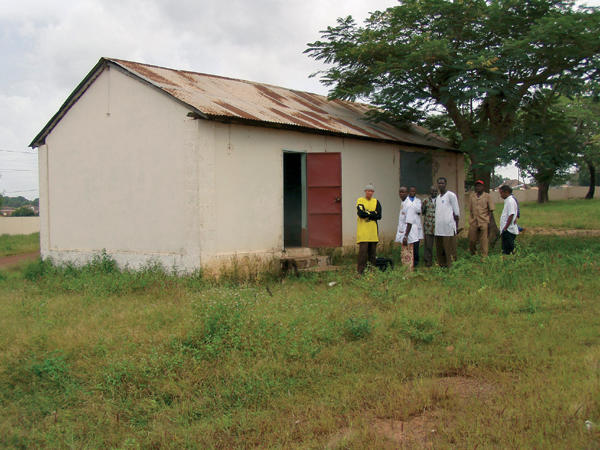
While working for Sightsavers International in 2003, I took over the management of an optical centre in Hohoe, Ghana (established in 1999), with the view to making it sustainable by improving profitability.
The basic changes we made were to run the centre more like a business.
However, after two years, the model proved to be unsustainable because of cost issues (the expense of running outreach trips, too many staff members), as well as a lack of community ownership, staff commitment, and patronage in the local area.
The lessons learnt in Ghana were subsequently applied to the setting up of optical centres within existing Sightsavers International-sponsored eye care facilities in hospitals in Cameroon, Nigeria, Mali, and Guinea. These lessons were also put in practice when reorganising two existing facilities in Sierra Leone.
In order to avoid the problems we experienced in Ghana, such as lack of patronage in the local area, we undertook an assessment of the potential centres. We considered several factors beforehand: available space at the clinics, local private and public optical suppliers, local population numbers, the proximity of the optical centre to the main population centres, patronage at the current clinic, existing facilities available at the clinic, available staff or training institutions, hospital administration and local government commitment, the influence of other stakeholders, current memoranda of understanding, and so on.
After this assessment, we compiled orders for equipment and materials. The stock for the centres included fashionable frames, lenses (single vision and bifocal), readers, cases, cords, and low vision supplies (providing low vision services forms part of the centres’ remit).
Staffing was a delicate issue, as optical centres often do not fit into existing government salary and employment structures. This is an area that requires extensive advocacy by NGOs and private providers to improve the acceptance of optical providers within the public system. Optical and low vision service provision is further complicated by the lack of training facilities available.
Our experiences in Ghana suggested that we needed a strong outline of procedures in the optical centres. This led to the development of an extensive handbook that is used in day-to-day operations.
The handbook outlined the records to be kept, operational guidelines, storeroom procedures, outreach guidelines, staff job descriptions, administrative requirements, and a monitoring checklist.
A generic version of this document was developed as the basis for organising the new optical centres. However, it was heavily adapted to suit local circumstances; the organisational structure, in particular, was adapted to fit within existing eye clinic and hospital procedures.
Another lesson we learnt was to treat our patients as customers: we are aiming for profit and independence, and frames are as much about style as they are about function. Frame styles and lens types should be considered with the local population in mind.
The centres have only been operating since the beginning of 2007, and reports are now coming in. The biggest issues are with record keeping (store room procedures, recording payments, taking patient details) and improving the refraction and dispensing skills of staff. The focus now is also on generating awareness of refractive errors within the local communities.
In my opinion, the long-term success of the centres is dependent on the close monitoring of their operations, particularly proper stock keeping, financial accountability, and quality of service. This can indeed be accomplished if we train staff and set up appropriate systems.

Participants in a staff training workshop. GUINEA


